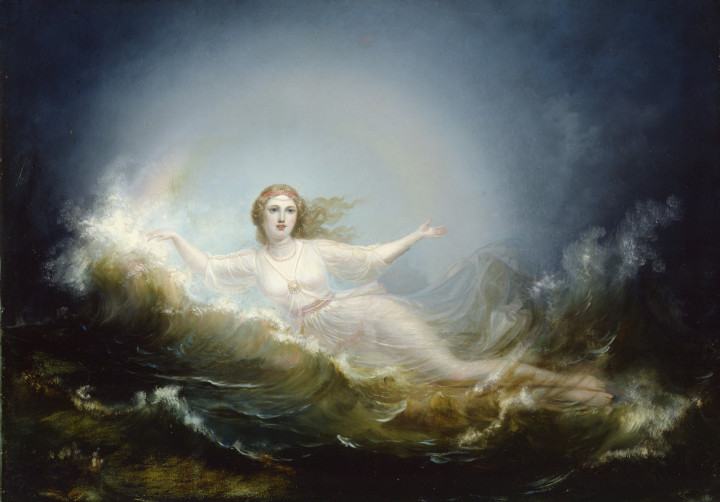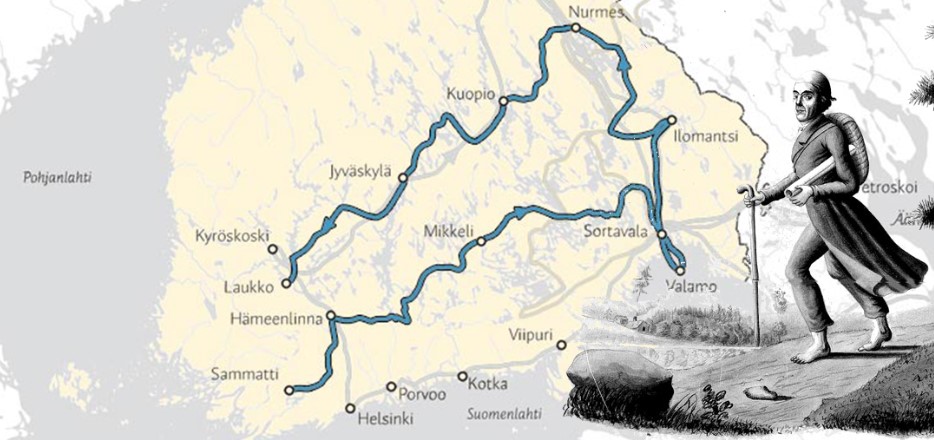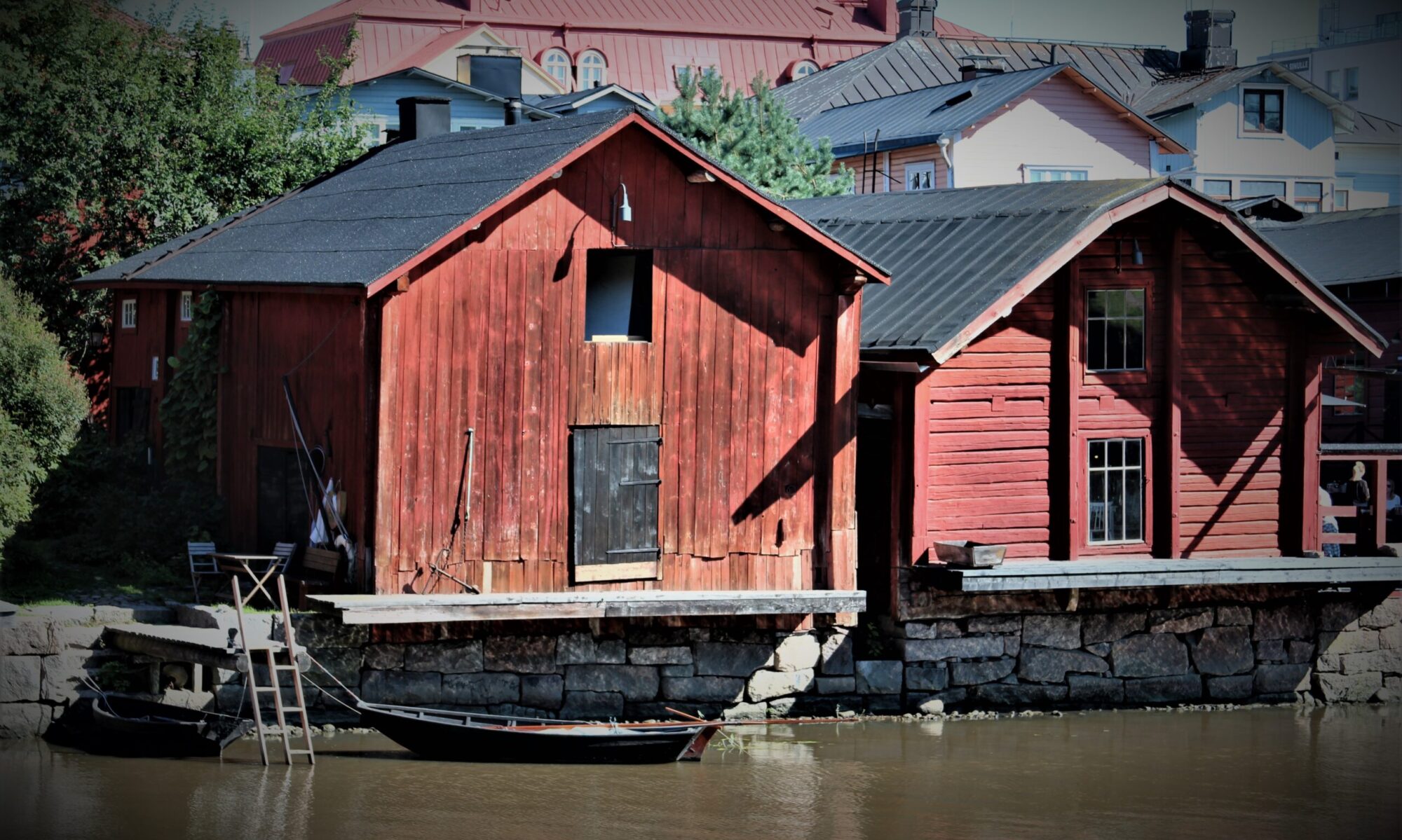Today, April 9th (9 huhtikuu) is suomen kielen päivää, The Day of Finnish Language. (side note: In Finnish grammar, the months of the year do not get capitalized, April is “huhtikuu”.)
According to ancient Finnish mythology as recorded in the Kalevala (more on that coming…), the creation myth says that Ilmatar, the virgin daughter of Sky, went floating in the primordial seas for 700 years and eventually let a teal (duck) lay six eggs on her knee. As the eggs were being incubated, Ilmatar’s knee got hot. She shifted with discomfort, and whoops, the eggs fell, broke, and their parts formed the universe.

From the yolk the sun was made, Light of day to shine upon us;
From the white the moon was formed, Light of night to gleam above us;
– Kalevala (poems as collected by Elias Lönnrot)
See, here’s another example of the Finns as optimists. Their ‘Humpty Dumpty’ story had an incredible outcome that didn’t require super glue. More Finnish: the word for the moon (made of egg whites) is kuu, and all the month names have the ‘kuu’ suffix…. so that’s pretty ‘kuul’ 😉
Let’s get back to April 9th…. on this date, two men are celebrated that are foundational to the Finnish language. The date commemorates the death anniversary of Mikael Agricola as well as the birthday of Elias Lönnrot.
Mikael Agricola lived in the 1500s and is recognized as the father of literary Finnish. He was a proponent of the Protestant Reformation in Sweden which, at that time, included the territory of present-day Finland. Liturgy in the language of the people was one of the main principles of the Reformation, so Agricola began to translate liturgical books into Finnish. He studied in Germany under Martin Luther and translated the Old Testament with some of his peer students. Later he moved back to ‘Finland’ and created the first Finnish version of the New Testament. He literally invented as he translated, and is credited with the creation of the first standardized, comprehensive writing system for the Finnish language. Let no one tell you it’s simple. There are at least 15 grammatical case endings, three types of 8 different vowels, vowel harmony, myriad double letters, diphthongs, and agglutination (the smashing of separate words into one big long word). From this earnest Finnish language student: Geez!?! thanks for the gumball, Mickey…
Elias Lönnrot lived 300 years later in the 1800s and was a physician that loved his native language. He took leaves of absence from his doctoring gig and went on tours to different parts of Finland to forage, a very typically Finnish activity. Only he didn’t just forage for plants, berries and mushrooms, he also collected poems. Up to that time, Finnish folklore and mythology had been an oral tradition handed down through the generations through poetic song. He went village to village and listened to singers sharing these tales, took notes, collected stories, and wrote drafts…

Lönnrot was influenced by ancient Greek epics like the Iliad and the Odyssey, and developed his masterpiece as a chronological story with characters and a plot that tied together all of the songs and poems that he had meticulously recorded. The Finnish national epic, Kalevala, was published in the mid 1800s and consists of roughly 50 folk stories and nearly 23,000 verses. Its influence on Finland is deeply felt to this day, and even provided some of the inspiration for the language and songs JRR Tolkien incorporated into the Silmarillion and the Lord of the Rings. Lönnrot is also well known by botanists as he authored the Flora Fennica – Suomen Kasvisto in 1860, the first scientific work published, not in Latin, but in Finnish.
So every 9th of huhtikuu, spare a thought to the death of Agricola and the birth of Lönnrot, the Grandfather and Father of written Finnish and the Kalevala… and celebrate suomen kielen päivää, the Day of Finnish Language!

Karin,
What an education you are giving us all. I just wish i knew the sounds of the words you are sharing with us.
Mom
hmmm. an interesting idea! I wonder if I could figure out how to attach an audio clip… thanks!
My sentiments, exactly, Laura Lee! I’ve studied languages all my life and would LOVE to know how to correctly pronounce these vowel-laden words! I’ve been fascinated for years with the sound of Finnish names, mostly read from NHL players’ jerseys…
Also, I’m assuming Mikael Agricola was actually “Mike the farmer”, given than “agricola” means “agricultural” in Spanish!
Agricola had to invent some Finnish words to accommodate the Bible narrative (there was no Finnish word for “kiss” for instance). I wish he had invented a Finnish word for “please.”
What a wonderful life experience……………
Fascinating traveling with you on your journey through Finland
“so that’s pretty ‘kuul’ “ made me snort laugh! I’m so enjoying your blog!!